
DRY, DESOLATE, AND NEARLY uninhabited, the Paracas Peninsula juts into the Pacific Ocean on Peru’s south coast. Since at least the nineteenth century, the peninsula has been known as the site of ancient tombs, and looters would pillage its graves and sell the dusty textiles they unearthed to antiquities dealers. But when Peruvian archaeologist Julio C. Tello began excavations there in 1925, he was nevertheless astonished by what he found. Digging in places the looters had missed, in an area known as Cerro Colorado, Tello turned up two huge groups of graves. One group, which he called Cavernas because its long underground passageways resembled caves, contained mummies wrapped in earth-colored weavings surrounded by hundreds of ceramic jars decorated with animal forms. In the other, located about a mile away, which he called the Necropolis, there were few ceramics, but hundreds of vibrantly colored weavings made of vicuña and llama wool, cotton, tropical bird feathers, and human hair. Some textiles featured flying humanoids clutching knives, grinning as snakes crawled out of their mouths. Others depicted bird and fish deities, flowers, and bold, abstract patterns, or men in fanciful headdresses and tunics holding decapitated heads by their hair. A few were as large as dining room tables.
This story is from the November/December 2020 edition of Archaeology.
Start your 7-day Magzter GOLD free trial to access thousands of curated premium stories, and 8,500+ magazines and newspapers.
Already a subscriber ? Sign In
This story is from the November/December 2020 edition of Archaeology.
Start your 7-day Magzter GOLD free trial to access thousands of curated premium stories, and 8,500+ magazines and newspapers.
Already a subscriber? Sign In
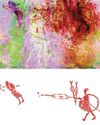
A Very Close Encounter
New research has shown that human figures painted in red on a rock art panel in central Montana depict individuals engaged in a life-or-death encounter during an especially fraught historical moment.
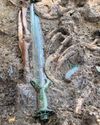
A Sword for the Ages
A zigzag pattern, now tinged with the green-blue patina of oxidized metal, adorns the octagonal hilt of a rare sword dating to the Middle Bronze Age in Germany (1600-1200 B.C.) that was recently excavated in the Bavarian town of Nördlingen.
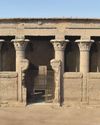
Ancient Egyptian Astrology
For centuries, layers of soot have coated the ceilings and columns in the entrance hall of Egypt's Temple of Esna. Now, an Egyptian-German team of researchers, led by Hisham El-Leithy of the Egyptian Ministry of Tourism and Antiquities and Christian Leitz of the University of Tübingen, is restoring the temple's vibrant painted reliefs to their original brilliance.
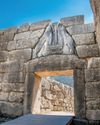
BRONZE AGE POWER PLAYERS
How Hittite kings forged diplomatic ties with a shadowy Greek city-state
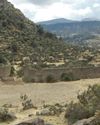
RITES OF REBELLION
Archaeologists unearth evidence of a 500-year-old resistance movement high in the Andes

Secrets of Egypt's Golden Boy
CT scans offer researchers a virtual look deep inside a mummy's coffin

When Lions Were King
Across the ancient world, people adopted the big cats as sacred symbols of power and protection

UKRAINE'S LOST CAPITAL
In 1708, Peter the Great destroyed Baturyn, a bastion of Cossack independence and culture

LAPAKAHI VILLAGE, HAWAII
Standing beside a cove on the northwest coast of the island of Hawaii, the fishing village of Lapakahi, which is surrounded by black lava stone walls, was once home to generations of fishers and farmers known throughout the archipelago for their mastery of la'au lapa'au, or the practice of traditional Hawaiian medicine. \"

A MORE COMFORTABLE RIDE
Although the date is much debated, most scholars believe people 5,000 years ago. For thousands of years after that, they did so without saddles. \"In comparison with horse riding, the development of saddles began relatively late, when riders began to care more about comfort and safety in addition to the horse's health,\" says University of Zurich archaeologist Patrick Wertmann.